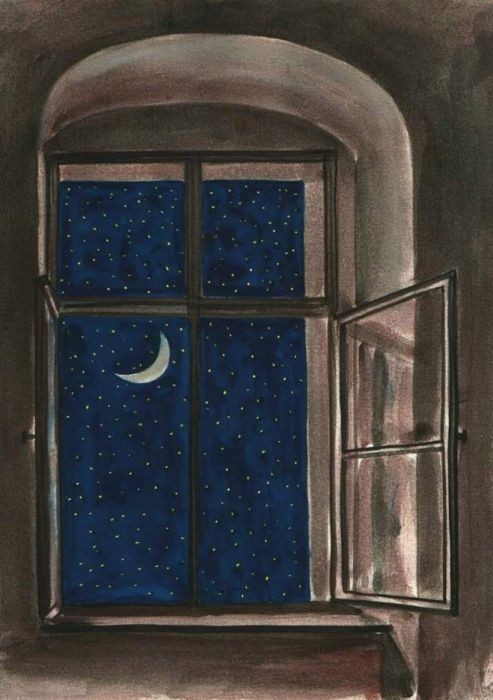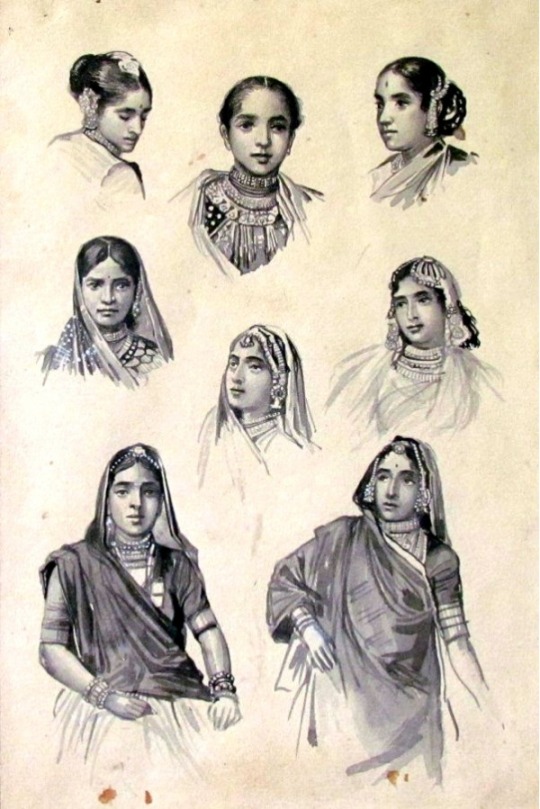Note
Do you agree with the popular conclusion in western linguistics that vowel length is not phonemic in modern Marathi (even if it’s indicated in writing)? I went to Maharashtra for the first time during my last visit to India and I did notice that vowel length was a lot more ambiguous than I expected in all cases, but especially in the distinction between अ and आ. But the mutual intelligibility between Maharashtrian Marathi and my dialect, Thanjavur Marathi, is not great, so wtf do I know
This sounds like one of those things that we don't really pay attention to as native speakers, but would be very important for someone learning the language!
However, I do think that there is plenty of ambiguity between short and long vowels, especially इ/ई and उ/ऊ. The example that comes to mind for me is that the -वू suffix in Marathi, where say धावू नकोस is pronounced closer to धाउ नकोस.
I can't say I've noticed an ambiguity between अ and आ though. I think some examples might help there.
I'm no linguist, but this was a really cool ask! Thank you!
18 notes
·
View notes
Text

The sun sets over Agra Fort Station as carriages are watered and given a routine inspection. In the background, Jama Masjid Mosque. Uttar Pradesh, India, 1983.
credit- Steve McCurry
41 notes
·
View notes
Text

Gardening Vocabulary
बाग़बानी - gardening, horticulture (feminine), also उद्यान-विज्ञान (masculine)
खेती, कृषि - farming, agriculture (feminine)
माली - gardener (masculine), मालिन (feminine)
बग़ीचा, बाग़ - garden (masculine), also उद्यानभूमि (feminine)
* सब्ज़ियों का बाग़ / बग़ीचा - vegetable garden (masculine)
* जड़ी बूटियों का बगीचा - herb garden (masculine)
फलों का वृक्ष / पेड़ - fruit tree (masculine)
बेरी की झाड़ी - berry bush (feminine)
लता - creeper, vine (feminine)
सब्ज़ी, तरकारी - vegetable (feminine), also साग (masculine)
* जड़ वाली सब्ज़ी - root vegetable (feminine)
पौधा, पादप - plant (masculine)
* a plant can be खाद्य (edible), सजावटी (decorative, ornamental), औषधीय (medicinal) or मसालेदार (spice plant).
* also पत्तेदार (leafy), फलदार (fruitful, fruit-bearing), स्वस्थ (healthy), पुष्ट (thriving, nourished) or रोगग्रस्त (diseased).
फूल, पुष्प - flower (masculine)
* a flower can be for example सुगंधित (fragrant) or खिलता हुआ (blooming).
कंद - bulb (masculine)
पत्ती - leaf (feminine)
किशलय - new, fresh leaf (masculine)
तना - stem (masculine)
टहनी - twig (feminine)
डाल, डाली - branch (feminine)
पानी - water (masculine)
जारक - oxygen (masculine)
सूर्य का प्रकाश - sunlight (masculine)
ताप - heat, warmth (masculine)
प्रकाश संश्लेषण - photosynthesis (masculine)
Planting and Growing Crops
बुवाई - sowing (feminine)
बुवाई का मौसम - sowing season (masculine)
बढ़ने का मौसम - growing season (masculine)
बढ़ना, उगना - to grow (intransitive)
उगाना - to grow [plants, flowers, berries etc.] (transitive)
की देख रेख करना - to nurse, take care of (transitive)
मुरझाना - to wither (intransitive)
जोताई, जुताई - plowing, tillage (feminine)
जोतना - to plow (transitive)
बीज - seed, seedling (masculine)
बोना, रोपना, बीज लगाना - to sow, plant (transitive)
पंक्तियों में लगाना - to sow in rows (transitive)
पादपों की परस्पर दूरी - distance between plants (feminine)
भूमि, ज़मीन, मिट्टी - soil, ground, earth (feminine)
* soil can be हल्की, बालुकामय (light, sandy) or भारी, चिकनी (heavy, clay soil).
* ground can be सूखी (dry) or नम (wet, moist).
भूमि की आर्द्रता / नमी - soil moisture (feminine)
गमला - pot (masculine)
गमले में लगा पौधा - potted plant (masculine)
गमले की मिट्टी - potting soil (feminine)
मिट्टी डालना - to pour soil (transitive)
अंकुर - shoot, bud, sprout (masculine)
अंकुरित - sprouting, budding (adjective)
अंकुरण - sprouting (masculine)
जड़ - root (feminine)
जड़ वाला - rooted (adjective)
जड़ जमाना - to root, take root (transitive)
छिड़काव करना - to spray, water (transitive)
पानी डालना - to water (transitive)
सिंचाई - irrigation (feminine)
सींचना, सिंचाई करना - to irrigate (transitive)
भूमि को नम रखना - to keep the soil moist (transitive)
खाद, उर्वरक - fertilizer, manure (masculine)
खाद डालना - to apply fertilizer (transitive)
कीटनाशक - insecticide, pesticide (masculine)
कीट, कीड़ा - pest, insect (masculine)
छँटाई - pruning (feminine)
काट-छाँट करना - to prune (transitive)
घास पात - weeds (masculine)
गोड़ना - to hoe, scrape (transitive)
गोड़ाई निराना, निराई करना, गुड़ाई करना - to weed (transitive)
फूलना, फूल लगना, खिलना - to bloom, flower (intransitive)
फलना - to flourish, carry fruit (intransitive)
फसल - crop, harvest (feminine)
उपज - yield, produce (feminine)
उत्पादन करना - to produce [fruit, berries, crops] (transitive)
Common Garden Plants
प्रजाति, जाति - species (feminine)
मटर - pea (feminine)
मूली - radish (feminine)
गाजर - carrot (feminine)
चुक़ंदर - beet (masculine)
शलजम - turnip, rutabaga, swede (masculine)
पालक - spinach (feminine)
अजमोद - parsley (masculine)
अजवायन - celery (masculine)
आलू - potato (masculine)
शकरकंद - sweet potato (masculine)
शतावरी - asparagus (feminine)
हरी सेम - green beans (feminine)
राजमा - kidney beans (feminine)
मिर्च - chili (feminine)
शिमला मिर्च - bell pepper, capsicum (feminine)
फूलगोभी - cauliflower (feminine)
हरी फूलगोभी - broccoli (feminine)
बंद गोभी - Brussel sprout, cabbage (feminine)
लाल पत्तागोभी - red cabbage (feminine)
बैंगन, ब्रिंजल - aubergine, eggplant (masculine)
प्याज - onion (masculine)
हरा प्याज - spring onion (masculine)
हरे प्याज के पत्ते - chives (masculine)
लहसुन - garlic (masculine)
खीरा - cucumber (masculine)
तुरई, तोरी - zucchini (feminine)
कद्दू - pumpkin (masculine)
टमाटर - tomato (masculine)
मकई - corn, maize (feminine), also मक्का (masculine)
गुलाब - rose (masculine)
नरगिस - daffodil (masculine)
नीलक - lilac (masculine)
सूरजमुखी - sunflower (feminine)
स्रीवत - pansy (masculine)
गेंदा - marigold (masculine)
Garden Tools
औज़ार - tool (masculine)
बागवानी दस्ताने - gardening gloves (masculine)
खुरपी - trowel, spade (masculine)
* खुरपियाना - to weed with a trowel or spade (transitive)
हल - plow, plough (masculine)
* हल जोतना - to plow (transitive)
सींचने का कनस्तर - watering can (masculine)
पानी का पाइप - water hose (masculine)
बागवानी कैंची - pruning shears (feminine)
खुदाई का कांटा - garden fork (masculine)
* खुदाई करना - to dig (transitive)
कुदाल, कुदार - hoe (masculine)
बेलचा - shovel (masculine)
बगीचे का ठेला - wheelbarrow (masculine)
19 notes
·
View notes
Text
جو ہم پہ گزری ہے شاید سبھی پہ گزری ہے
فسانہ جو بھی سُنا، کچھ سُنا سُنا سا لگا
اقبال عظیم

Jo hum pe guzri hai shyd sabhi pe guzri hai
Fasana jo bhi suna, kuch suna suna sa laga
-Iqbal Azeem
162 notes
·
View notes
Text
I think it would be very cyberpunk if English speakers adopted the words lakh and crore from India, because we need more names for large numbers. You can't just start using other people's words like that though, white baby.
795 notes
·
View notes
Text

9 notes
·
View notes
Text
It hit me hard when someone said;
"Intezaar ka dusra naam mohabbat hai"
And i replied;
"Agar insaan sahi hai to intezaar galat nhi hai"


80 notes
·
View notes
Text
Many people will try tell you "Oh, you're such a basic guy, you don't even drink booze nor smoke anything". Just know, they do this because they can't understand
"ये कागज़ी फूल जैसे चेहरे मज़ाक उड़ाते हैं आदमी का... इन्हें कोई काश ये बता दे मक़ाम ऊँचा है सादगी का"

"अंधेरा छाया है इनके आगे हसीन गफलत की रोशनी का ... ये कागज़ी फूल जैसे चेहरे मज़ाक उड़ाते हैं आदमी का... इन्हें कोई काश ये बता दे मक़ाम ऊँचा है सादगी का"
100 notes
·
View notes
Text
In English:
Perhaps, somewhere, someday, at a miserable time, we may see each other again.
-Vlamdir Nabokov
In Urdu:
Khatam hone ko hai safar shayad, phir mileingey kabhi magar shayad.
-Jaun Eliya
26 notes
·
View notes
Text
tere kurte mein mera kangan phans jaye,
use suljhate suljhate saari umar guzar jaye.

202 notes
·
View notes
Text
Language Learning Journey Update
It's been a while since I've been on Tumblr! In the months I've been away, I was focusing heavily on Persian and strengthening my skills in all areas of the language before I switch to a maintenance phase and pick up another language. During this time, I also got really into planning and journaling which has helped me better structure language learning in my schedule as well as reflect on how best to structure my time.
I certainly learned a lot from this time but the biggest takeaway for me is that my biggest pain point when learning a language is acquiring vocabulary. I tend to let it happen rather naturally (slowly) and while it's a valid method, it also leads me to stagnate and plateau. That's why, with the change in my language learning plans, I've also restructured my learning schedule (for, like, the millionth time).
Learning Two Languages Simultaneously
I was originally planning on (re)learning Korean after going through the intensive 3 months of Persian but recent developments in my professional life have pushed me to start learning Cantonese instead. My goal for Cantonese is mostly to reach a decent listening comprehension level and a basic speaking level.
Although I'm learning Cantonese from scratch, I feel that I still have a long way to go with Persian. I am not ready for a traditional maintenance phase, but I know I am close to burn out and have to dial it back. The schedule is structured around Persian and I fill the rest of the time I was using for Persian previously, for Cantonese.
ON/OFF Weeks System
This system was inspired by my need to find a different way to learn and focus on vocabulary while also avoiding burn out in Persian.
ON Weeks: These are weeks where I will be focusing on 1 skill in Persian in the mornings. For example, on Monday, I will be reading intensively (e.g., breaking down phrases, re-reading, translating, compiling vocabulary) for about 25 minutes. In the afternoons, I am working on getting exposure to Cantonese and learning the sound system.
OFF Weeks: These weeks involve only practicing the Persian vocabulary I accumulated during the ON weeks. I'll be re-reading them, defining or looking up words on Forvo, writing practice sentences, uploading them to HelloTalk, and correcting them. I also do some light, passive activities like listening while I clean something or reading for a few minutes without stopping to translate.
Off weeks don't really change much in the way of Cantonese. I will continue with my plan as is.
Maintenance languages: I do have to maintain French and Spanish, however, I am lucky that I interact with languages almost on a daily basis. When I foresee that a day may be void of one, I'll stack it with another hobby of mine (e.g., journaling in Spanish or reading in French).

An ON week coming up.
Tools pictured: Night owl by Owl Paper Co planner, Asvine P50 fountain pen, Tombow Fudenosuke hard tip brush pen, Zebra Mildliner highlighters
20 notes
·
View notes
Text
language learning is such a personal thing that there is no “right” or “wrong” way of doing it. it’s whatever works on bringing YOU closer to YOUR goal.
you want to watch tv shows but don’t really care for speaking with others? yay!! no speaking practice needed.
you want to learn quickly for an upcoming trip? yay! text book phrases and simple grammar.
you’re a beginner and it’s been 10 years? 2 weeks? 6 months? it doesn’t matter. as long as you are working towards bringing YOURSELF closer to what YOU want to achieve, you have succeeded: you are succeeding; you are doing great.
i find that so much demotivation comes from comparison and/or trying to follow other's advice too closely. if anki decks don't work for you, that's fine! if duolingo works well for you, then use it!
this language learning thing, it should be enjoyed. in the sea full of deceptive polyglot stories and videos on top of videos attempting to understand how to learn languages in "the fastest way possible" sometimes we should sit back and ask ourselves, "when is just learning things, enough"?
with that i hope you all continue working towards your dreams! whether you want to become a translator or just watch a few more movies in your target language, you can do it. i know you have it in you.
756 notes
·
View notes
Text
We ask your questions so you don’t have to! Submit your questions to have them posted anonymously as polls.
4K notes
·
View notes
Text
I don't know why it took me so long to realize that we call the hindi varnamala anaraam because. अ से अनार. आ से आम.
10 notes
·
View notes















